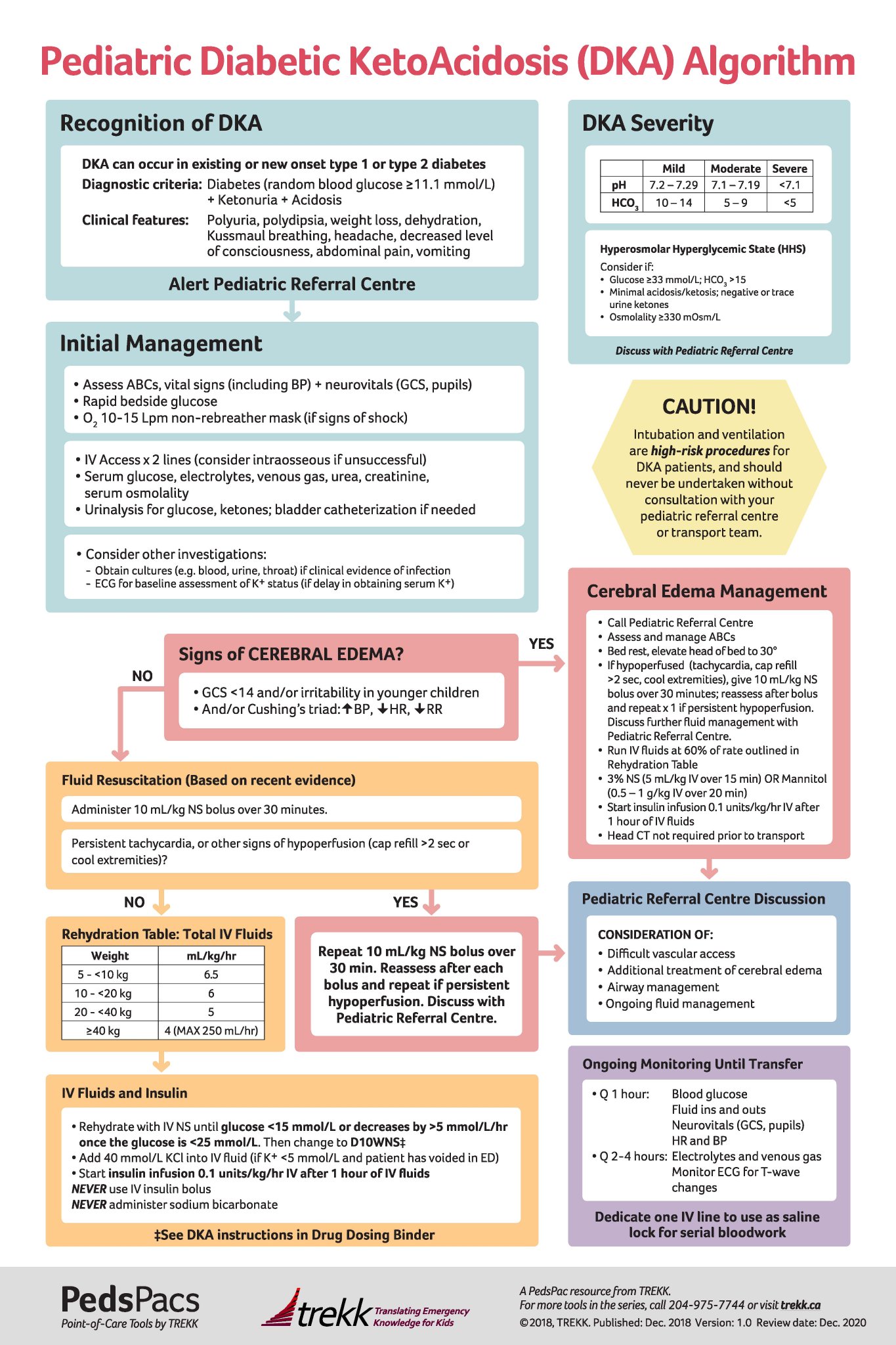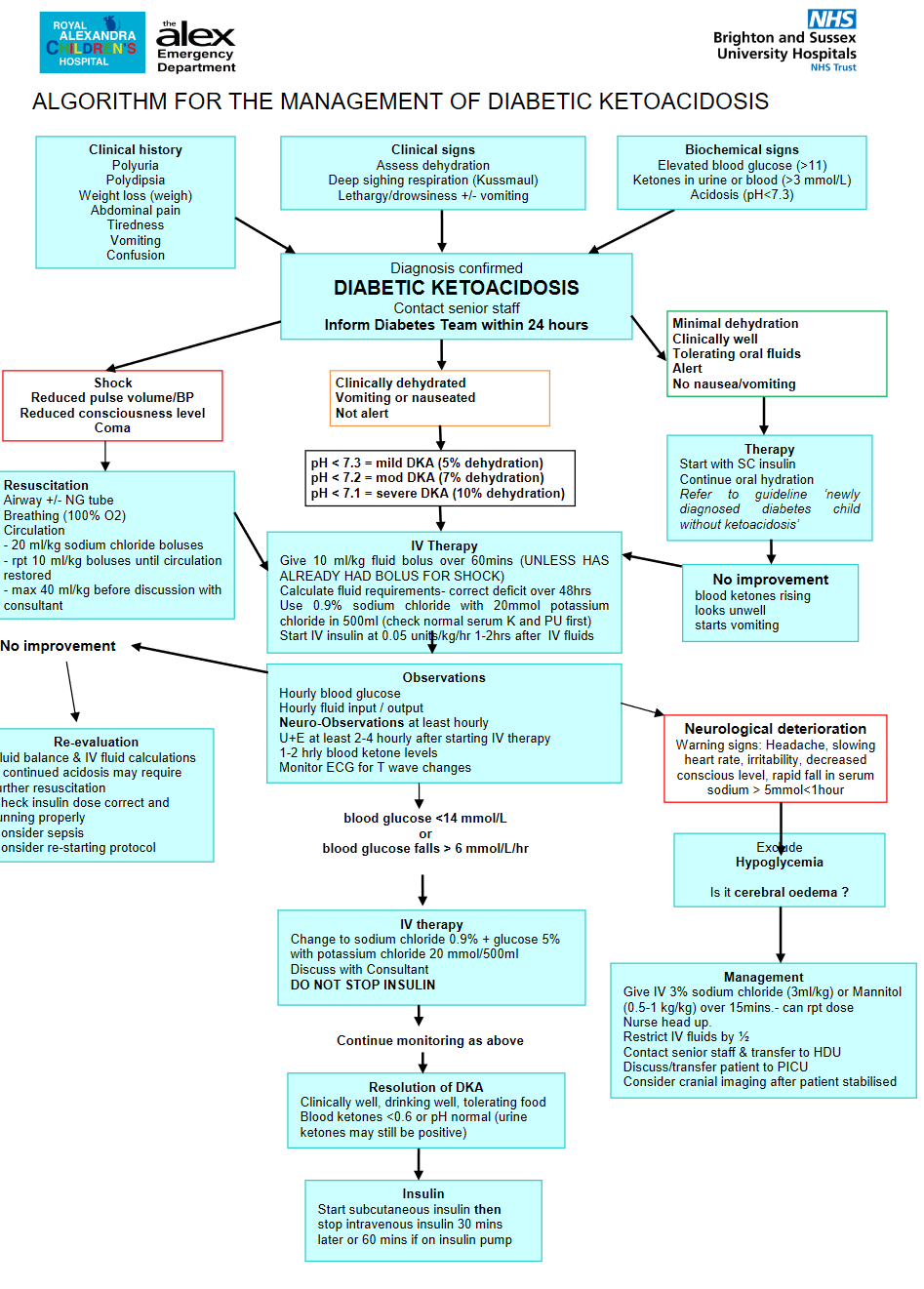Makindo Medical Notes"One small step for man, one large step for Makindo" |
|
|---|---|
| Download all this content in the Apps now Android App and Apple iPhone/Pad App | |
| MEDICAL DISCLAIMER: The contents are under continuing development and improvements and despite all efforts may contain errors of omission or fact. This is not to be used for the assessment, diagnosis, or management of patients. It should not be regarded as medical advice by healthcare workers or laypeople. It is for educational purposes only. Please adhere to your local protocols. Use the BNF for drug information. If you are unwell please seek urgent healthcare advice. If you do not accept this then please do not use the website. Makindo Ltd. |
Diabetes Mellitus Type 1 and DKA (children)
-
| About | Anaesthetics and Critical Care | Anatomy | Biochemistry | Cardiology | Clinical Cases | CompSci | Crib | Dermatology | Differentials | Drugs | ENT | Electrocardiogram | Embryology | Emergency Medicine | Endocrinology | Ethics | Foundation Doctors | Gastroenterology | General Information | General Practice | Genetics | Geriatric Medicine | Guidelines | Haematology | Hepatology | Immunology | Infectious Diseases | Infographic | Investigations | Lists | Microbiology | Miscellaneous | Nephrology | Neuroanatomy | Neurology | Nutrition | OSCE | Obstetrics Gynaecology | Oncology | Ophthalmology | Oral Medicine and Dentistry | Paediatrics | Palliative | Pathology | Pharmacology | Physiology | Procedures | Psychiatry | Radiology | Respiratory | Resuscitation | Rheumatology | Statistics and Research | Stroke | Surgery | Toxicology | Trauma and Orthopaedics | Twitter | Urology
Related Subjects:Sick Neonate |APGAR Scoring |Approach to Assessing Sick Child |Sick Child with Acute Gastroenteritis |Sick Child with Respiratory Distress |Sick child Diabetes Mellitus Type 1 and DKA
💉 Type 1 Diabetes Mellitus (T1DM) is a chronic autoimmune condition caused by destruction of pancreatic β-cells ➝ absolute insulin deficiency ➝ persistent hyperglycaemia. Around 25% of children present in Diabetic Ketoacidosis (DKA) at first diagnosis 🚨.
📖 About
- Autoimmune destruction of insulin-producing β-cells in the pancreas.
- Usually presents in childhood or adolescence, though can occur at any age.
- Requires lifelong insulin therapy.
🧬 Aetiology
- Insulin produced by islets of Langerhans (β-cells).
- Autoantibodies (e.g. anti-GAD, anti-islet cell) target β-cells, leading to progressive destruction.
- Genetic predisposition (HLA types), with environmental triggers (viral infections, toxins) thought to play a role.
🩺 Clinical Features
- Classic triad: Polyuria 🚽, Polydipsia 💧, Weight loss ⚖️.
- Vomiting, lethargy, and dehydration in severe cases.
- Nocturnal enuresis (bedwetting) may be a presenting sign.
- Recurrent candida infections can be a clue.
- 25% present in DKA (abdominal pain, vomiting, Kussmaul breathing, acetone breath).
🧪 Investigations
- Blood glucose: Random ≥11.1 mmol/L with symptoms is diagnostic.
- Ketones: Urine or blood ketones (raised in DKA).
- HbA1c: Chronic hyperglycaemia marker (≥48 mmol/mol).
- Blood gas: Metabolic acidosis in DKA (pH <7.3, HCO₃⁻ <15).
- Autoantibodies: Anti-GAD, anti-islet cell (autoimmune confirmation).
- Screen for coeliac and thyroid disease (autoimmune associations).
💊 General Management of T1DM
- Education 👨👩👧: Self-monitoring of glucose, insulin administration, sick-day rules.
- Insulin therapy:
- Basal-bolus: Long-acting insulin once daily + rapid insulin with meals.
- Pump therapy: Subcutaneous infusion in selected children; risks: infection, pump failure.
- Diet & lifestyle: Carbohydrate counting, healthy diet, regular exercise.
🚨 Paediatric Diabetic Ketoacidosis (DKA) Management


⚠️ Cerebral oedema is the most feared complication in paediatric DKA. Always monitor neurological status closely. Treat promptly with mannitol 20% (2.5 mL/kg IV over 10 min) or 3% hypertonic saline (5 mL/kg IV over 10–15 min) if suspected.
🩺 Stepwise Management
- 1️⃣ ABC & Monitoring
- Airway, Breathing, Circulation ➝ stabilise.
- Continuous monitoring: HR, BP, SpO₂, GCS, neuro obs hourly.
- Cardiac monitor (risk of arrhythmia if K⁺ deranged).
- 2️⃣ IV Access & Bloods
- Venous gas (pH, bicarbonate, ketones).
- FBC, U&E, glucose, lactate.
- Urinalysis for ketones.
- 3️⃣ Fluids 💧
- Correct dehydration slowly over 48 h (avoid cerebral oedema).
- Use 0.9% saline ± 5% dextrose when BG <14 mmol/L.
- Resus if shocked: 10 mL/kg 0.9% saline over 10–15 min (repeat once if needed).
- 4️⃣ Insulin 💉
- Start 1–2 h after fluids have begun.
- Continuous IV infusion at 0.05–0.1 units/kg/hr.
- Aim: fall in glucose 2–5 mmol/L/hr.
- 5️⃣ Potassium ⚡
- Total body K⁺ depleted even if serum appears normal/high.
- Add KCl once child is voiding and serum K⁺ <6 mmol/L.
- Typical: 20 mmol KCl per 500 mL bag.
- 6️⃣ Ongoing Care
- Hourly BG; 2–4 hourly VBG & electrolytes.
- Strict fluid balance (catheterise if necessary).
- Watch for headache, bradycardia, ↓GCS ➝ suspect cerebral oedema.
- 7️⃣ Transition to SC Insulin
- When ketones cleared, child well, eating & drinking.
- Overlap IV infusion with first SC dose by 30–60 min.